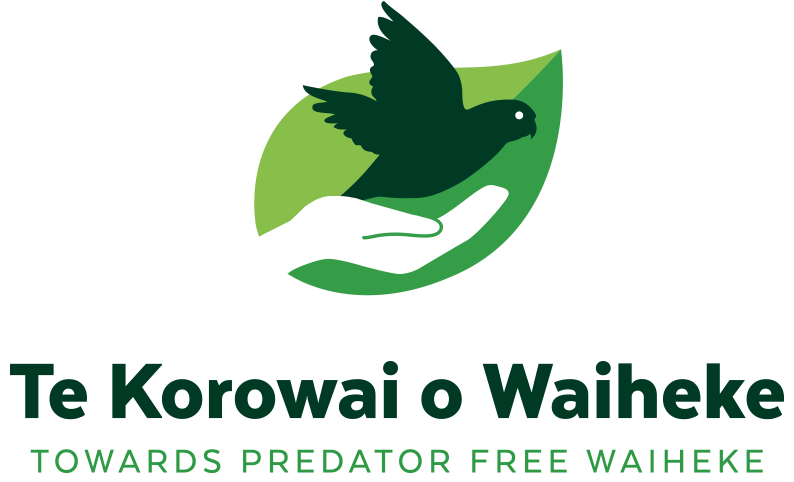Stoat eradication hits second anniversary
On this day, the 24th of February, we celebrate the collaborative efforts of the island-wide stoat eradication project as it reaches its second anniversary.
Opening of the stoat traps on February 24 2020
A committed team of volunteers, contractors, farm staff, community groups, park rangers and Te Korowai o Waiheke field team technicians have worked together diligently to remove 120 stoats from the Waiheke environment. Together they have serviced over 1600 traps almost 80,000 times in the two years since the project began.
Waiheke was one of the first five locations in Aotearoa to receive funding from Predator Free 2050 Ltd. When the network of traps was opened on February 24 2020, no one could have guessed the disruption that Covid-19 would bring to all industries. However, after the 2020 level 4 lockdown, stoat trapping was deemed essential, and the team have diligently been servicing traps through all alert levels and traffic light systems.
"I am so proud of what everyone has achieved so far," says Project Director Mary Frankham. "Thanks to the dedication of all the trappers across the island, the stoat catch rate is steadily trending downwards and thanks to the huge support team behind them for enabling them to do the mahi. That includes people hosting traps on their properties, technical advisors, Ngāti Paoa, funders, project partners, trustees, staff and other community supporters - all of whom aid the eradication project in different but crucial ways."
Some key findings from the project so far:
Genetic analysis shows low diversity.
Geneticist Dr Andrew Veale analyses every stoat caught on the island and has found their genetic diversity to be very low. This suggests there hasn’t been a newcomer for some time therefore there is a low chance of them swimming back to the island once they are removed.
Learning what eradication techniques work for Waiheke.
In the first trapping winter, the team followed advice to place dehydrated rabbit in the traps as they do in the South Island, however, it didn’t stand up to Waiheke’s conditions and disintegrated between trap services. The team now use fresh rabbit year-round which lasts up to three weeks in the winter months and the change has a direct result with a sustained catch rate over winter 2021.
Several different lures have been trialled throughout the project.
One of which was a stoat bedding lure that was trialled from September to December 2021 with promising results. Of the 11 stoats caught in the trial period, 8 of them were in a trap with the lure. Three of those traps had never caught a stoat before.
Birdlife increases.
Bird counts taken in November 2020 and 2021 show an overall increase in birdlife. Kākā numbers saw the most dramatic increase of 326% but fantails (68%) silver eye (38%) and tūī (20%) all saw a marked increase in abundance too. As there are only two points of data so far, it will take many more before it is considered statistically valid.
Strong Relationships
Over the two years of the project, a relationship of trust has developed between the trappers and landowners. Trappers service traps every week in the summer and every three in the winter and landowners remain curious about catches and committed to the overall project.
“I am so proud of what everyone has achieved so far”
A technical review of the programme is scheduled for March 2022 where technical specialists will advise on what strategies to take moving forward. As the stoat numbers drop to lower levels, the approach will continue to evolve. Different methods of detection including stoat dogs and trail cameras will become more common, and new lures are still to be tried too.
Over the past two years, we have learned a lot. As a team, we are continuing the work, committed to the common goal of tracking down every last stoat.
We hope you join us for the ride. Stay connected by signing up to the newsletter here, or follow along on Facebook, Instagram or Twitter.



